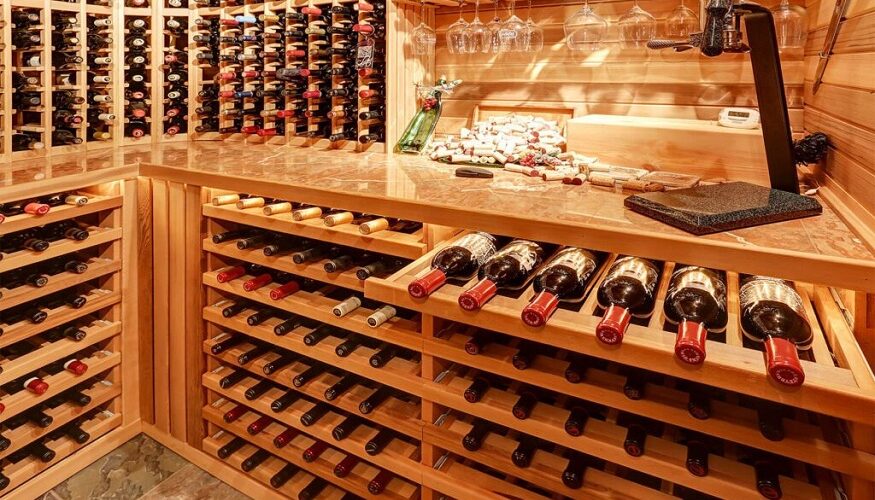For the dedicated wine collector, chilled wine cellars are more than just a storage space; it is a vital, controlled environment essential for protecting a valuable and perishable investment. The quality, aroma, and flavor of fine wine are critically dependent on consistent temperature and humidity, making the cellar’s cooling system its most important component. Yet, maintaining the perfect conditions—typically 55°F (13°C) and 60-70% relative humidity—requires constant energy consumption, often leading to high utility bills. The modern challenge for wine enthusiasts is finding the delicate balance: how to preserve the integrity of their collection and the aesthetic appeal of their cellar without sacrificing energy efficiency. The answer lies in smart design, superior insulation, and the adoption of modern cooling technologies that prioritize both performance and power savings.
The journey toward an energy-efficient cellar begins not with the cooling unit itself, but with the fundamental principles of thermal integrity. A cooling unit, no matter how advanced, is fighting a losing battle if the room it is cooling is not properly designed to retain cold air and block external heat. Addressing the construction elements first is the most significant step in reducing the long-term energy load.
The Foundation: Insulation and Vapor Barriers
The single most important factor in a cellar’s energy efficiency is its insulation. A properly insulated cellar dramatically reduces the amount of heat transfer from the warmer surrounding areas, minimizing the run-time required of the cooling unit. The walls, ceiling, and floor must all be treated as an uninterrupted thermal envelope.
The best material choice is typically a high R-value insulation, such as closed-cell spray foam. Unlike traditional fiberglass batting, spray foam creates a continuous, monolithic barrier that seals every crack and void, achieving superior R-values (a measure of resistance to heat flow) with less thickness. It is also an excellent air barrier, preventing warm, humid air from infiltrating the space.
Equally critical, and often overlooked, is the vapor barrier. A chilled wine cellar operates below the dew point of the surrounding air. Without a proper vapor barrier, warm, moist air from the exterior walls will inevitably penetrate the cellar’s insulation, condensing into water vapor. This condensation reduces the effectiveness of the insulation, increases the workload on the cooling system, and creates an environment ripe for mold and mildew—a catastrophic threat to the wine and the cellar structure. The vapor barrier, typically a sheet of polyethylene, should be installed on the warm side of the insulation to prevent this issue.
The Heart of the System: Efficient Cooling Technology
Once the thermal envelope is secured, the focus shifts to the cooling equipment itself. Modern wine cooling units are significantly more efficient than older, standard air conditioning units adapted for cellar use. The key is choosing a system designed specifically for the unique demands of a wine cellar.
- Inverter Technology: Look for cooling units that utilize inverter technology. Unlike conventional compressors that cycle on and off at full power, inverter compressors modulate their speed to match the cooling load precisely. This continuous, low-power operation maintains a much tighter temperature range, uses significantly less energy, and results in fewer temperature swings, which is better for the wine.
- Sizing and Load Calculation: Under-sizing a unit will cause it to run constantly, leading to premature failure and high energy consumption. Over-sizing will cause it to cycle on and off too quickly, leading to temperature and humidity fluctuations. A professional cooling specialist must perform a detailed heat load calculation based on the room’s size, insulation R-value, glass exposure, and lighting to select the precisely sized unit.
- Dedicated Humidity Control: Running the cooling unit constantly to maintain temperature often strips humidity from the air. Modern, energy-efficient systems often feature integrated humidification controls that add moisture back into the air with minimal energy use, ensuring the corks stay moist and properly sealed.
Conclusion: Preservation and Responsibility
An energy-efficient chilled wine cellar is a harmonious blend of architectural diligence and technological innovation. It proves that preserving a valuable wine collection does not have to come at the expense of environmental or fiscal responsibility. By first prioritizing the foundational elements—superior insulation and vapor barriers—and then selecting a precisely sized, inverter-driven cooling system, collectors can create a stable, stylish, and sustainable environment for their wines. This proactive approach ensures that the wines age gracefully, the utility bills remain manageable, and the collector can enjoy the full value of their investment for decades to come.

